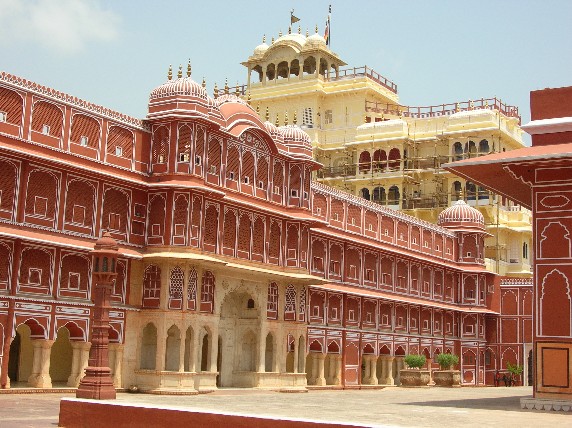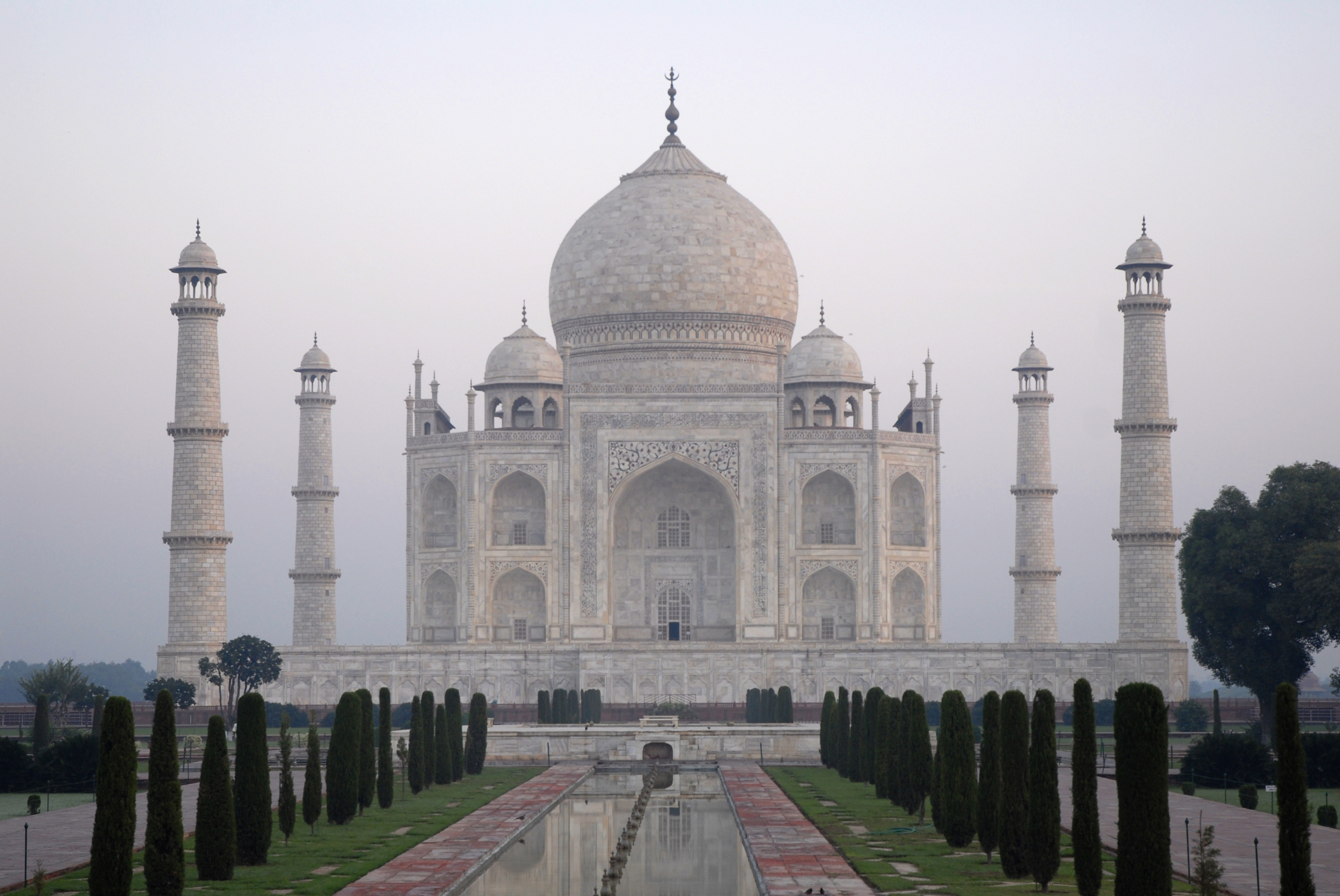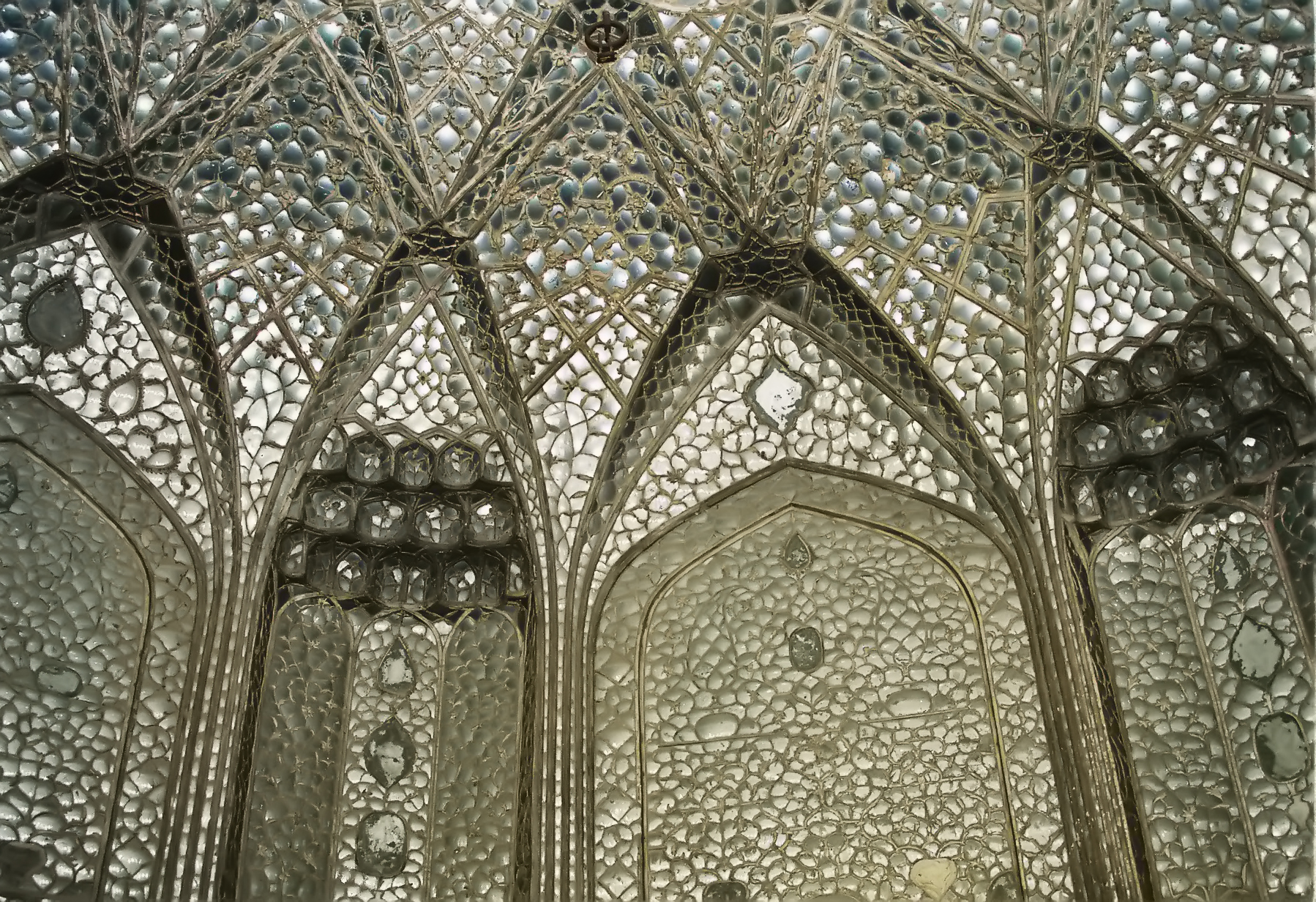|
Mahal (palace)
Mahal (), meaning "a mansion or a palace", though it may also refer to "living quarters for a set of people". It is an Indian word which derives from the Persian word ''mahal'', deriving from the Arabic word ''mahall'' which in turn is derived from ''ḥall'' ‘stopping place, abode’. A place of destination would therefore be referred to as "mahal anuzul". A place of recreation would be referred to as "mahal anunzul". The term máhal to refer to a place was also adopted in Hindi for example Panch Mahals and Jungle Mahals. The word developed its meaning for palace as in opposition to that of a jhopri or a "dilapidated house" as a neologism. Both Muslim and Hindu rulers built many Mahals in India. Notable mahals * Aina Mahal * Hawa Mahal * Hindola Mahal * Jahangir Mahal * Jahangiri Mahal named after Emperor Jahangir * Jahaz Mahal * Jal Mahal * Lal Mahal * Lalitha Mahal * Noor Mahal * Panch Mahal, Fatehpur Sikri * Pari Mahal * Prag Mahal * Shah Jahani Mahal a par ... [...More Info...] [...Related Items...] OR: [Wikipedia] [Google] [Baidu] |
Persian Language
Persian ( ), also known by its endonym and exonym, endonym Farsi (, Fārsī ), is a Western Iranian languages, Western Iranian language belonging to the Iranian languages, Iranian branch of the Indo-Iranian languages, Indo-Iranian subdivision of the Indo-European languages. Persian is a pluricentric language predominantly spoken and used officially within Iran, Afghanistan, and Tajikistan in three mutual intelligibility, mutually intelligible standard language, standard varieties, respectively Iranian Persian (officially known as ''Persian''), Dari, Dari Persian (officially known as ''Dari'' since 1964), and Tajik language, Tajiki Persian (officially known as ''Tajik'' since 1999).Siddikzoda, S. "Tajik Language: Farsi or not Farsi?" in ''Media Insight Central Asia #27'', August 2002. It is also spoken natively in the Tajik variety by a significant population within Uzbekistan, as well as within other regions with a Persianate society, Persianate history in the cultural sphere o ... [...More Info...] [...Related Items...] OR: [Wikipedia] [Google] [Baidu] |
Prag Mahal
The Prag Mahal is a 19th-century palace located next to the Aina Mahal in Bhuj, Kutch district, Kutch, Gujarat, India. History Prag Mahal is named after Rao Pragmalji II, who commissioned it and construction began in 1865."All about Gujarat: Palaces" . Gujarat State Portal.Haresh Pandya . Rediff.com (4 September 2006). It was designed by Colonel Henry St Clair Wilkins in what the local tourist office describes as the Italian Gothic style, although it would be better described as a Romanesque architecture twist on the Indo-Saracenic Revival architecture, Indo-Saracenic Revival style, and many Italian artisans were involved in its construction. The palace ... [...More Info...] [...Related Items...] OR: [Wikipedia] [Google] [Baidu] |
Rajput Architecture
Rajput architecture is an architectural style associated with the forts and palaces of the many Rajput rulers. Many of the Rajput forts are UNESCO World Heritage Sites and popular tourist attractions. Rajput architecture represents different types of buildings, which may broadly be classed either as religious or military. These include temples, forts, stepwells, gardens, and palaces. The forts were specially built for defense and military purposes. The Mughal Empire, Mughal and European architecture influenced indigenous Rajput styles of art and architecture. Rajput architecture continued well into the 20th and 21st centuries, as the rulers of the princely states of Presidencies and provinces of British India, British India commissioned vast palaces and other buildings, such as the Albert Hall Museum, Lalgarh Palace, and Umaid Bhawan Palace. These usually incorporated European styles as well, a practice which eventually led to the Indo-Saracenic architecture, Indo-Saraceni ... [...More Info...] [...Related Items...] OR: [Wikipedia] [Google] [Baidu] |
Urdu-language Words And Phrases
Urdu (; , , ) is an Indo-Aryan language spoken chiefly in South Asia. It is the national language and ''lingua franca'' of Pakistan. In India, it is an Eighth Schedule language, the status and cultural heritage of which are recognised by the Constitution of India. Quote: "The Eighth Schedule recognizes India's national languages as including the major regional languages as well as others, such as Sanskrit and Urdu, which contribute to India's cultural heritage. ... The original list of fourteen languages in the Eighth Schedule at the time of the adoption of the Constitution in 1949 has now grown to twenty-two." Quote: "As Mahapatra says: "It is generally believed that the significance for the Eighth Schedule lies in providing a list of languages from which Hindi is directed to draw the appropriate forms, style and expressions for its enrichment" ... Being recognized in the Constitution, however, has had significant relevance for a language's status and functions. It also has ... [...More Info...] [...Related Items...] OR: [Wikipedia] [Google] [Baidu] |
Islamic Architecture
Islamic architecture comprises the architectural styles of buildings associated with Islam. It encompasses both Secularity, secular and religious styles from the early history of Islam to the present day. The Muslim world, Islamic world encompasses a wide geographic area historically ranging from western Africa and Europe to eastern Asia. Certain commonalities are shared by Islamic architectural styles across all these regions, but over time different regions developed their own styles according to local materials and techniques, local dynasties and patrons, different regional centers of artistic production, and sometimes Islamic schools and branches, different religious affiliations. Early Islamic architecture was influenced by Roman architecture, Roman, Byzantine architecture, Byzantine, Iranian architecture, Iranian, and Architecture of Mesopotamia, Mesopotamian architecture and all other lands which the early Muslim conquests conquered in the seventh and eighth centuries.: "As ... [...More Info...] [...Related Items...] OR: [Wikipedia] [Google] [Baidu] |
Architecture In Iran
Iranian architecture or Persian architecture (, ''Me'māri e Irāni'') is the architecture of Iran and parts of the rest of West Asia, the Caucasus and Central Asia. Its history dates back to at least 5,000 BC with characteristic examples distributed over a vast area from Turkey and Iraq to Uzbekistan and Tajikistan. Persian buildings vary greatly in scale and function, from vernacular architecture to monumental complexes. In addition to historic gates, palaces, and mosques, the rapid growth of cities such as the capital Tehran has brought about a wave of demolition and new construction. According to American historian and archaeologist Arthur Upham Pope, Arthur Pope, the supreme Iranian art, in the proper meaning of the word, has always been its architecture. The supremacy of architecture applies to both pre- and post-Islamic periods. Iranian architecture displays great variety, both structural and aesthetic, from a variety of traditions and experience. Without sudden innovatio ... [...More Info...] [...Related Items...] OR: [Wikipedia] [Google] [Baidu] |
Mughal Architecture Elements
Mughal or Moghul may refer to: Related to the Mughal Empire * Mughal Empire of South Asia between the 16th and 19th centuries * Mughal dynasty * Mughal emperors * Mughal people, a social group of Central and South Asia * Mughal architecture * Mughlai cuisine ** Mughlai paratha, a street food * Mughal painting * Grand Mughal, exonymous title given to the Mughal emperors * Great Mogul Diamond * '' Empire of the Moghul'', historical fiction novel series by Alex Rutherford ** ''Moghuls'' (TV series) or ''The Empire'', Indian TV series based on the novels Other uses * Moghulistan in Central Asia ** Moghol people * Moghul, Iran, a village * Mughal Khel, a sub-tribe of Yousafzai Pashtuns settled in Ghoriwala, Bannu. * Mirza Mughal (1817–1857), a Mughal prince * Arjumman Mughal, Indian actress * Chaya Mughal, Indian cricketer * Farooq Mughal, American politician from Georgia * Fiyaz Mughal, founder of Tell MAMA * Tehmasp Rustom Mogul, Indian sailor * Mughal Road, road in Jammu and ... [...More Info...] [...Related Items...] OR: [Wikipedia] [Google] [Baidu] |
Zafar Mahal (Mehrauli)
Zafar Mahal, in Mehrauli village, in South Delhi, India, is considered as the last monumental structure built as a summer palace during the fading years of the Mughal Empire, Mughal era. The building has two components namely, the Mahal (palace), Mahal or the palace, which was built first by Akbar Shah II in the 18th century, and the entrance gate that was reconstructed in the 19th century by Bahadur Shah Zafar II, popularly known as "Zafar" (the ''nom de plume'' of Bahadur Shah II) meaning ‘Victory’. It has a forlorn history because Bahadur Shah Zafar, who wished to be buried in the precincts of the Zafar Mahal (palace) and the famous Dargah of Khwaja Qutubuddin Bakhtiar Kaki in Mehrauli, Delhi, was deported by the United Kingdom, British to Rangoon after the failed Indian Rebellion of 1857, Revolt of 1857, where he died of old age. The monument today is in a neglected and ruined state, locals play cricket and gamble freely inside the protected monument. The 18th-century palac ... [...More Info...] [...Related Items...] OR: [Wikipedia] [Google] [Baidu] |
Thirumalai Nayakkar Mahal
Thirumalai Nayakkar Mahal is a palace completed in 1636 by Tirumala Nayaka, a king of the Madurai Nayak dynasty, who ruled Madurai from 1623 to 1659. It is located to the southeast of the Meenakshi Amman Temple in central Madurai. The present structure is the main palace which served as the living quarters of the king, and the original palace complex was four times larger. History The Nayaks of Madurai ruled this Kingdom from 1545 until the 1740s and Thirumalai Nayak (1623-1659) was one of their greatest kings notable for various buildings in and around Madurai. During the 17th centuries, the Madurai Kingdom had Portuguese, Dutch and other Europeans as traders, missionaries and visiting travellers. Over 400 years many parts of the buildings suffered the destructive effects of war; a few, however, are sufficiently in repair to be converted into use by the garrison, as granaries, store-houses, and powder magazines during the time of East India Company. According to British re ... [...More Info...] [...Related Items...] OR: [Wikipedia] [Google] [Baidu] |
Taj Mahal, Agra
The Taj Mahal ( ; ; ) is an ivory-white marble mausoleum on the right bank of the river Yamuna in Agra, Uttar Pradesh, India. It was commissioned in 1631 by the fifth Mughal emperor, Shah Jahan () to house the tomb of his beloved wife, Mumtaz Mahal; it also houses the tomb of Shah Jahan himself. The tomb is the centrepiece of a complex, which includes a mosque and a guest house, and is set in formal gardens bounded on three sides by a crenellated wall. Construction of the mausoleum was completed in 1648, but work continued on other phases of the project for another five years. The first ceremony held at the mausoleum was an observance by Shah Jahan, on 6 February 1643, of the 12th anniversary of the death of Mumtaz Mahal. The Taj Mahal complex is believed to have been completed in its entirety in 1653 at a cost estimated at the time to be around 32 million, which in 2015 would be approximately 52.8 billion (827 million). The building complex incorporates the design tra ... [...More Info...] [...Related Items...] OR: [Wikipedia] [Google] [Baidu] |
Mughal Emperors
The emperors of the Mughal Empire, who were all members of the Timurid dynasty ( House of Babur), ruled the empire from its inception on 21 April 1526 to its dissolution on 21 September 1857. They were supreme monarchs of the Mughal Empire in the Indian subcontinent, mainly corresponding to the modern day countries of India, Pakistan, Afghanistan, and Bangladesh. They ruled many parts of India from 1526 and by 1707, they ruled most of the subcontinent. Afterwards, they declined rapidly, but nominally ruled territories until the Indian Rebellion of 1857, where they gave their last stand against the British forces in India. The Mughal dynasty was founded by Babur (), a Timurid prince from the Fergana Valley (modern-day Uzbekistan). He was a direct descendant of both Timur and Genghis Khan. The Mughal emperors had significant Indian and Persian ancestry through marriage alliances as emperors were born to Persian princesses. During the reign of 6th Mughal Emperor Aurangze ... [...More Info...] [...Related Items...] OR: [Wikipedia] [Google] [Baidu] |
Sheesh Mahal (Lahore)
The Sheesh Mahal (; '' "The Palace of Mirrors"'') is a palace located within the Shah Burj block at the north-western corner of Lahore Fort. It was constructed under the reign of Mughal Emperor Shah Jahan in 1631–32, with later additions made under Sikh Empire, Sikh Maharaja Ranjit Singh. The ornate white marble pavilion is inlaid with pietra dura and intricate mirror work of the finest quality. The hall was reserved for personal use of the imperial family and their close :wiktionary:aide, aides. It is among the 21 monuments that were built by successive Mughal emperors inside Lahore Fort, and forms the "jewel in the Fort’s crown."Khan, Shehar Bano (2004Wither heritage?''Dawn (newspaper), Dawn''. 11 July. Retrieved 22 April 2008 As part of the larger Lahore Fort Complex, it has been inscribed as a UNESCO World Heritage Site since 1981. Etymology ''Sheesh Mahal'', in Urdu language, literally means 'Crystal Palace'. However, with its pietra dura decorations and intricate mir ... [...More Info...] [...Related Items...] OR: [Wikipedia] [Google] [Baidu] |









